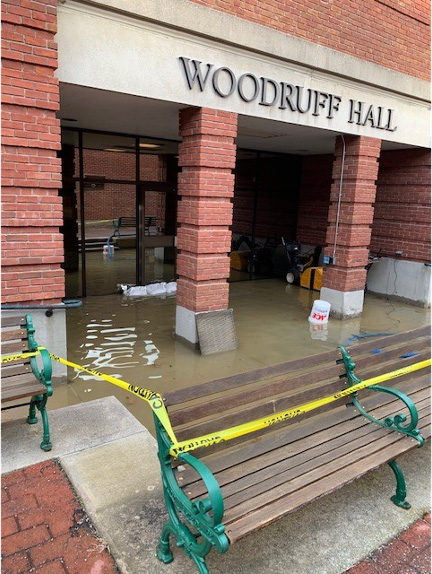These worms aren’t good for your soil
As you read this article, there might be a destructive species of worm crawling silently underneath your feet.
The Green Mountain state’s soil is being severely threatened by a species of worm that sounds like it should be in a children’s cartoon.
The reason why they are called Jumping Worms is because they have a tendency to go all-out when they are being captured or handled. Jumping Worms are no joke and they pose a serious threat to landscapes and forests in Vermont.
This week I had the absolute honor to sit down with one of the state’s (and in my opinion country’s) most respected ecologists, Dr. Kristen Ross of Vermont State University at Castleton.
Ross is the head of the Wildlife and Forestry Conservation major here on campus, and she does a very good job at spreading environmental education awareness for the state of Vermont and beyond.
We both agreed that Jumping Worms are a pressing issue for soil and ecological health, and we both believe that it is very important that you know what is going on in the state when it comes to these animals.
“These worms are also extremely bad for your garden as well as forests and will totally destroy the structure of your soil. Turning the soil into a material like coffee grounds,” Ross said.
These worms are masters at draining the soil of its precious materials, and ultimately making the soil useless for plants to get any nutrients out of it.
Jumping Worms are after the same nutrients in the soil that many other life forms are after, including plants. Some of these materials include Organic Matter, Nitrogen, Potassium, and Phosphorus. These animals make the soil loose and infertile, and this impacts the environment all the way up the ecological chain.
The Jumping Worm (Amynthas agrestis) is a non-native species of worm in Vermont. They are similar to many species of earthworm and were brought to this continent by settlers.
In fact, according to the Atlantic, many experts believe that they first arrived in the United States in California in the 1860s. Others have been in the Southeast for more than a century. Since then, they have obviously moved across the country, and are entering new areas frequently.
Ross’ specific concerns for this species relate to a variety of topics like: How are these worms changing competition for resources with other decomposers? How do these worms’ impact other organisms in the soil? Where are these worms, and what do the populations look like exactly? How are these worms changing soil health and soil efficiency?
Ross explains that many people do not know that these animals are highly movable, and often reside on the surface of the soil.
Therefore, when people move soil around that soil probably contains Jumping Worms or Jumping Worm eggs. This is the very reason why these animals have been able to spread so rapidly across the country.
Ross also explained that Jumping Worms do not just reside in soil.
“The same goes for wood chips, and people should be aware that any type of planting material could and probably has Jumping Worm eggs or the worms themselves in it.”
Ross has had some negative experiences with Jumping Worms, but fortunately she came up with a system to help combat these pesky worms.
“If you think you might have Jumping Worms or Jumping Worm eggs in your soil or compost, I suggest removing your compost or wood chips and placing the material in black trash bags.”
Ross also gave insight into how you should set up your trash bags.
“Make sure that they are seal tight, making sure most of the air is out if you can. Also, try to have the bags flatter and more spread out so the sun will go through the entire substance and kill any worms or worm eggs that are in it. Try your best to lay your flat bags outside in the sun.”
Ross explained that temperature is very important for killing these worms.
“They need to stay at 131 Fahrenheit for at least 3 consecutive days to kill the worms and eggs. The weather in Vermont is often not consistent, so I would leave it out longer than three days, maybe a week.”
Ross also suggests taking the temperature of your trash bags often.
“It would be best to try to take the temperature of the substance in the bag and try to get an accurate temperature reading in the center of the substance.”
You can usually see the eggs of these worms, and to find them before they hatch is very crucial.
This article also includes a picture of a Jumping Worm, and I hope you start to be on the lookout for these worms. You are going to start seeing more activity from wildlife as the snow melts, especially from worms and amphibians because these situations are going to make a perfect muddy habitat.
I hope you gained a great depth of knowledge from this article, and I also hope you can come back to this information if you ever need it.
Please remember this information, and if you are going to move planting substances around the Green Mountain state, please make sure you are checking and heating the materials for these worms.
– Gavin Bradley








